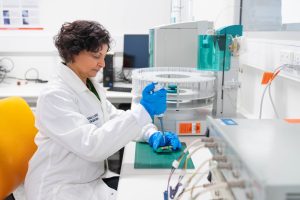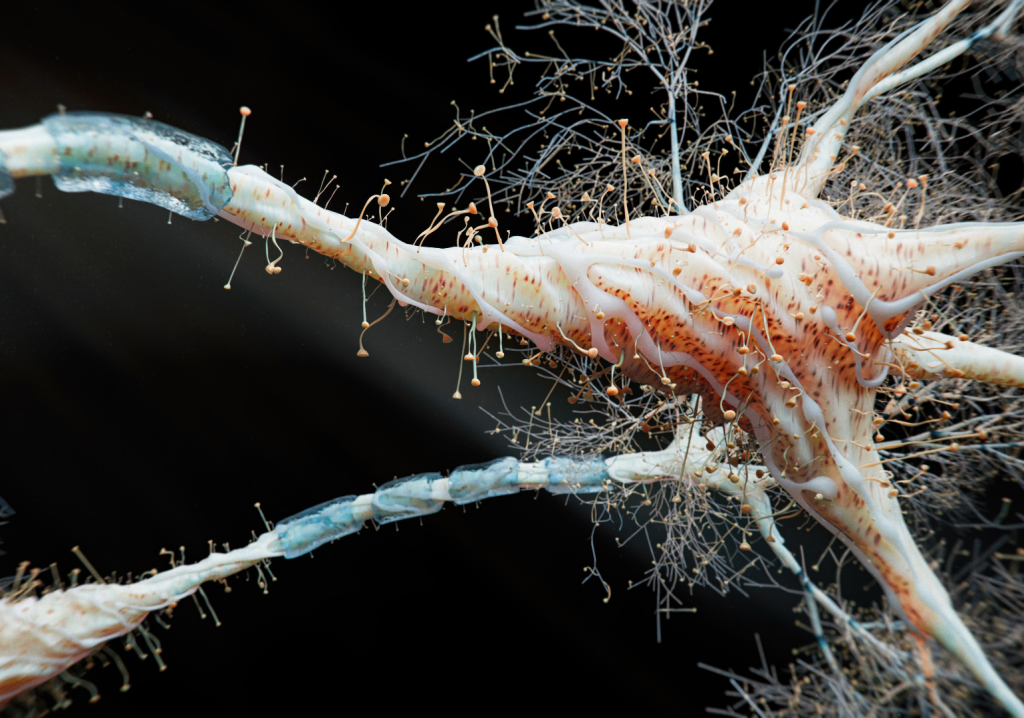Diagnosing Alzheimer’s is a long, costly and sometimes painful process. This new device could reduce the diagnosis time down to only a few minutes, allowing earlier treatment and better patient outcomes.
Associate Professor Sudha Mokkapati from Monash University’s School of Materials Science and Engineering is used to discussing semiconductors, nanomaterials and electronic devices. Her current research interests include semiconductor nano-photonics, nano-lasers and nanostructured solar cells.
What she hasn’t talked about much – until now – is Alzheimer’s disease, the most common form of dementia, affecting more than 472,000 Australians.
It’s a topic Dr Mokkapati will no doubt be talking about a lot more regularly, now that she and other Monash engineers have developed a sensor capable of detecting low levels of Alzheimer’s biomarkers, the molecules found in blood that show disease and other abnormalities.
“We work with all kinds of semiconductor materials and electronic devices – sensors, lasers, solar cells – and we were working with molecular sensors looking for sensors that could detect anything at very low quantities,” Dr Mokkapati explained of her research over the past four or five years.
Collaboration
In stepped Associate Professor Matthew Pase, who leads the Epidemiology of Dementia Lab, the Aging and Neurodegeneration Research Program at Monash’s School of Psychological Sciences. Together they found a use for the sensor in diagnosing Alzheimer’s disease.
“He told us that biomarkers are widely accepted by the scientific community but there are no ways to detect them very early on in blood,” Dr Mokkapati said. “That’s when we thought, ‘Okay, maybe we can use our sensors for detecting these biomarkers and we could make a huge impact here’.”
This sensor device, which is the size of a matchbox and weighs a few grams, relies on a simple finger prick of the patient. Its impact could be far-reaching, helping to diagnose Alzheimer’s and other diseases in rural and regional areas – as well as overseas.
Accessibility
Accurate diagnosis for Alzheimer’s currently involves diagnostic tools combined with medical history, neurological exams, cognitive and functional assessments, brain imaging (MRI, CT, PET) and extracting cerebrospinal fluid or blood.
“That is not accessible to everyone, [can be] very painful and you need specialist facilities,” said Dr Mokkapati. “It’s expensive and you have to wait one or two weeks to get the test results. If we are able to use our blood test tool then it might cost a couple of hundred dollars [as opposed to thousands] and you get the test results within a matter of minutes.”
She estimates hundreds of these devices could be produced in a short space of time. Right now, for example, a student in the lab might take 10-15 hours to make three or four devices, she said. “The good thing is all processes we use are currently being used by the semiconductor industry so in principle the manufacturing can be rolled out easily without having to change the current processes too much.
“We’ve completed testing that shows the technology is highly advanced by design and capable of detecting ultra-low levels of several disease biomarkers in blood. The next stage is to undertake the clinical validation needed to bring this a step closer to reality, and we’re reliant on further funding to progress this.”
If all goes to plan, the device could be rolled out in a few years’ time. It could also potentially be used to test for certain cancers and has been tested on clinical samples from the Victoria Cancer Biobank.
“We have to remember that we don’t have known biomarkers for all diseases and also the concentration of biomarkers is very important, so if the biomarkers exist in the blood or the body at very high concentrations then our device is an overkill,” said Dr Mokkapati. “We might already have some other ways of detecting them.”
Practical impact
Dr Mokkapati is excited about what the future holds. “When we found areas where this device could be used and could make a lot of impact, I felt really, really happy and a bit overwhelmed actually,” she said.

She completed her PhD on monolithic integration of compound semiconductor quantum dot based optoelectronic devices at the Australian National University. In 2008, she then joined the Centre for Sustainable Energy Systems at the Australian National University as a post-doctoral researcher.
In this position she developed photon management strategies for thin film solar cells based on amorphous Si, crystalline Si and III-V quantum-dot absorbers. But sometimes, it can be hard to see the practical applications of this research.
“You know, you just go to the lab and do the stuff that you do every day and you don’t know that you will end up here. You do not imagine the impact you can have [such as] creating such a device.”
“It [the Alzheimer’s test] makes me feel like everything I have been doing is worth it,” she said. “When you’re doing research you don’t know what you will stumble upon and I always had this worry in the back of my mind: ‘Will this be useful?’ But if one thing works out I will be very, very happy because I know that what I have been doing is useful.”
“If we are able to catch this disease very early on, we could [treat earlier and] have better health outcomes for patients,” Dr Mokkapati added.
